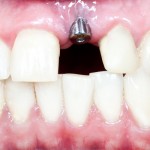
Evidence suggests that peri-implant mucositis is seen in around 40% of cases (Dental Elf 15th April 19, 2015) . The aim of this review was to assess the efficacy of self-performed mechanical and/or chemical plaque control in the management of peri-implant mucositis (PM) in partially and fully edentulous patients.
Methods
Searches were conducted in the Cochrane Library, Medline and Embase and the journals; Journal of Clinical Periodontology, Journal of Periodontology, Clinical Oral Implants Research, International Journal of Oral & Maxillofacial Implants, Clinical Implant Dentistry and Related Research, European Journal of Oral Implantology. Studies in English, German, French and Italian were considered.
Randomized clinical trials (RCTs) and controlled clinical trials (CCTs) of patient-administered mechanical and/or chemical plaque control around osseointegrated implants sup- porting fixed and/or removable restorations in the presence of PM were considered. Two reviewers independently selected studies, abstracted data and assessed bias. The Cochrane risk of bias tool was used. The primary outcome measures were Resolution of peri-implant mucositis (i.e. absence of BoP) and incidence of peri-implantitis.
Results
- 11 RCTs were included (10 parallel, 1 cross-over)
- Follow-up periods ranged from 3 to 24 months.
- Several definitions of PM were reported.
- A narrative summary of the findings was presented
- 6 RCTs reported superior outcomes with; rinsing with an essential oil; irrigation with chlorhexidine (CHX); triclosan toothpaste; sonic or counter-rotational powered toothbrush.
- 5 RCTs failed to report superiority with: brushing with adjunctive
- CHX gel; adjunctive use of CHX rinsing or CHX gel
Conclusions
The authors concluded:
Professionally- and patient-administered mechanical plaque control alone should be considered the standard of care in the management of PM. Therapy of PM is a prerequisite for the prevention of peri-implantitis.
Comments
A number of previous systematic reviews have been carried out looking at a range of treatments for peri-implantitis (see links). All the reviews highlight challenges regarding the definitions used for peri-implant disease or the failure to report the definition used. The majority of the included studies are small ranging is size from 20 – 120 patients with a total of 440 patients involved in 10 studies. The numbers of patients in possibly the largest study is unknown as only the number of implants (2966) was given. With a high incidence of PM being reported and the increasing number of implants being placed there is a need for some large high quality RCTs to identify the best treatment to maintain oral and peri-implant health.
Links
Salvi GE, Ramseier CA. Efficacy of patient-administered mechanical and/or chemical plaque control protocols in the management of peri-implant mucositis. A systematic review. J Clin Periodontol. 2015 Apr;42 Suppl 16:S187-201. doi: 10.1111/jcpe.12321. PubMed PMID: 25495416.
Dental Elf -15th April 19-2015 – Peri-implantitis: a common complication of dental implants?
Dental Elf – 27th Oct 2014 – Peri-implantitis: lack of high quality evidence for surgical approaches

Self-management options for peri-implantitis http://t.co/VOVaEtoKHn
Limited evidence for best self-management approach for peri-implant disease http://t.co/RrzSQrxTMk
Don’t miss Peri-implantitis: no clarity on best self-management options http://t.co/9vVESRT0HP
[…] Dental Elf – 22nd April 2015 – Peri-implantitis: lack of clarity on best self-management… […]